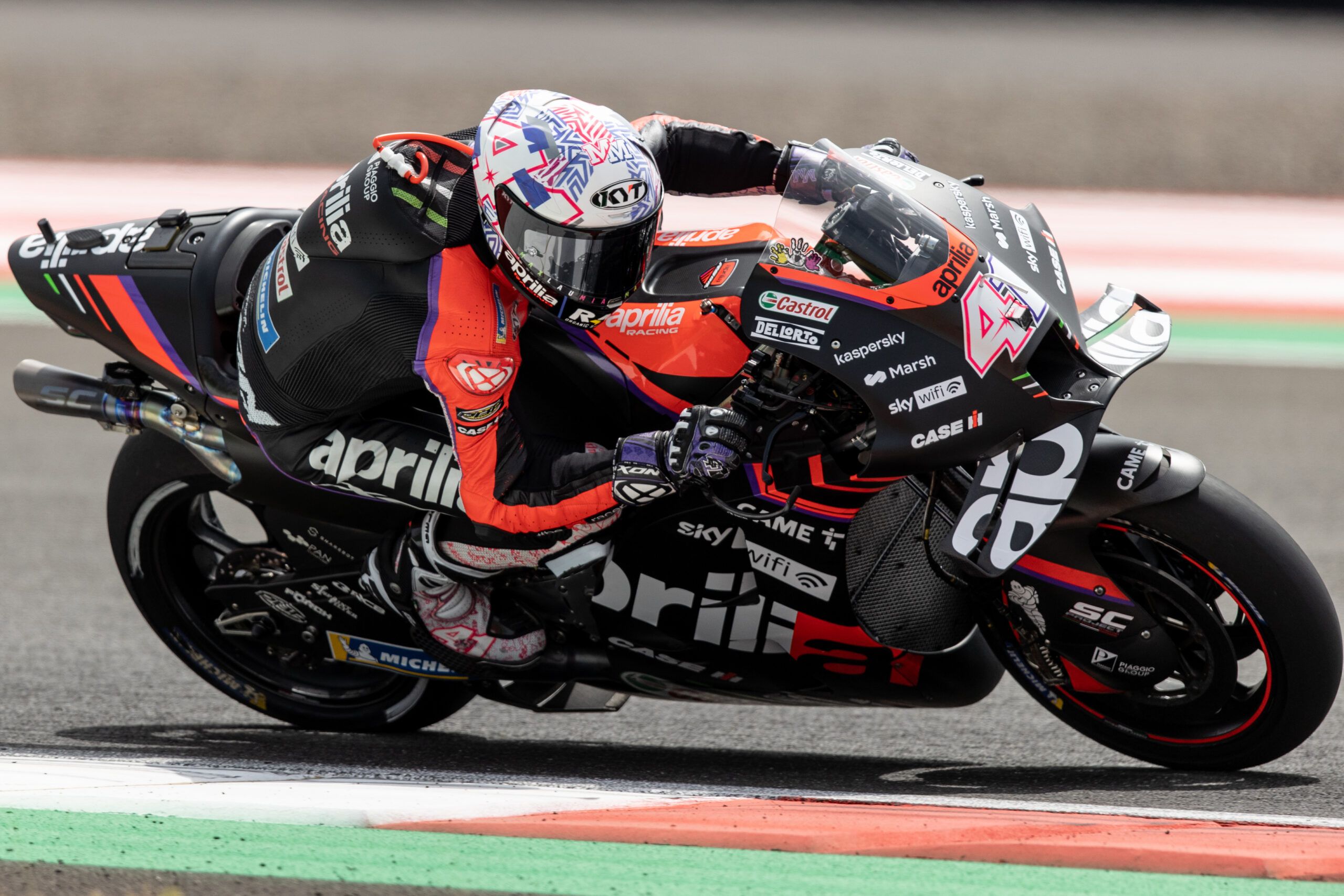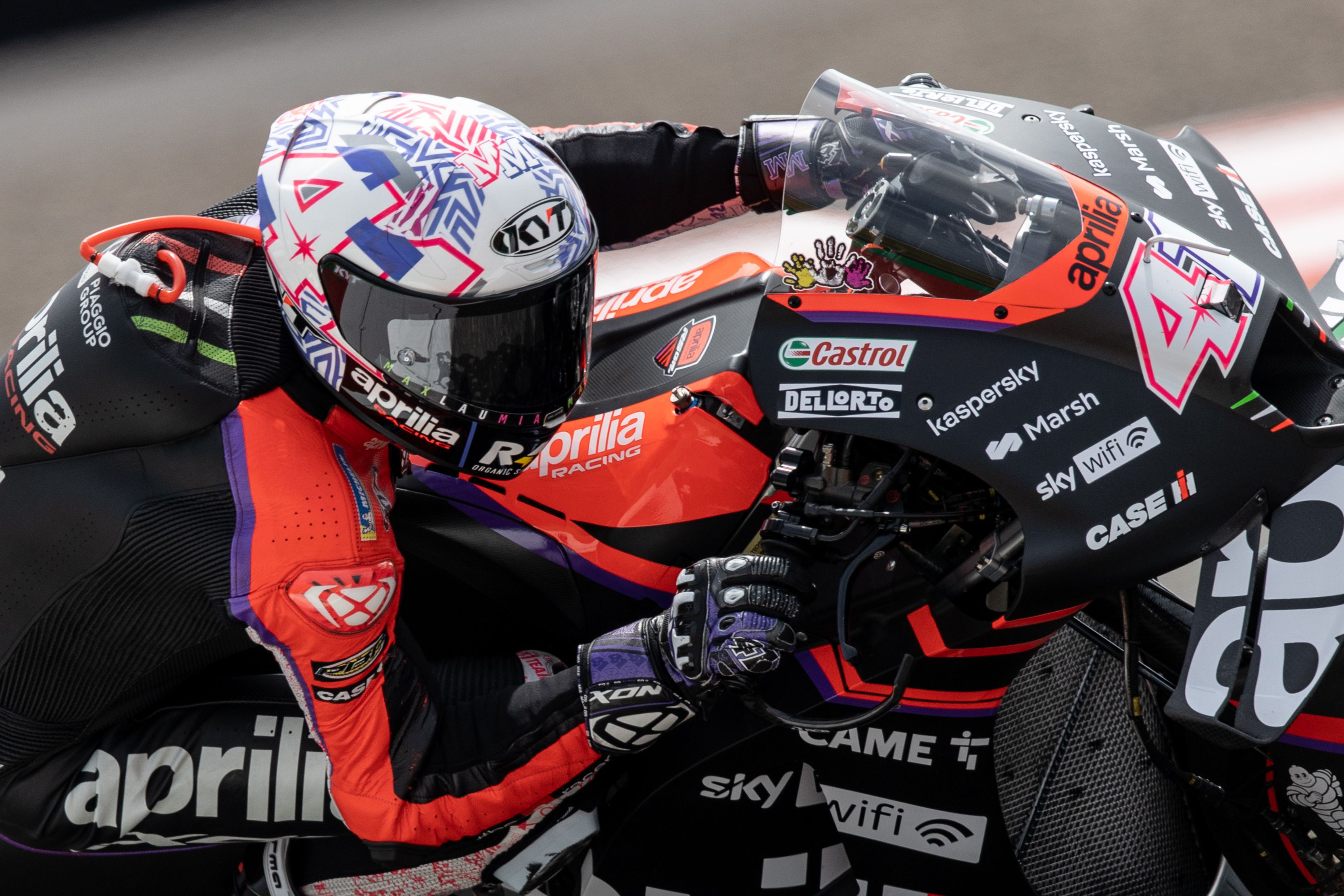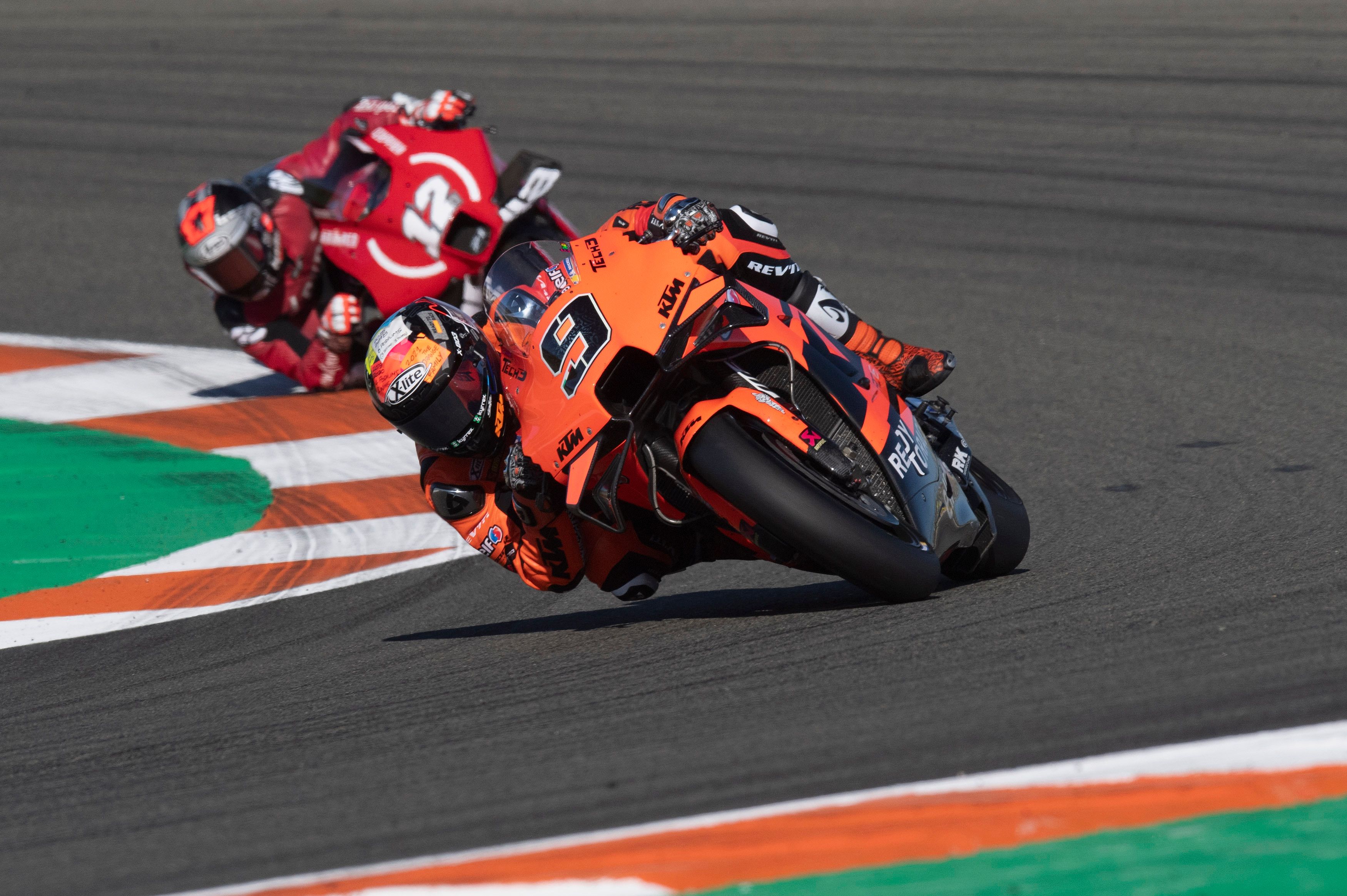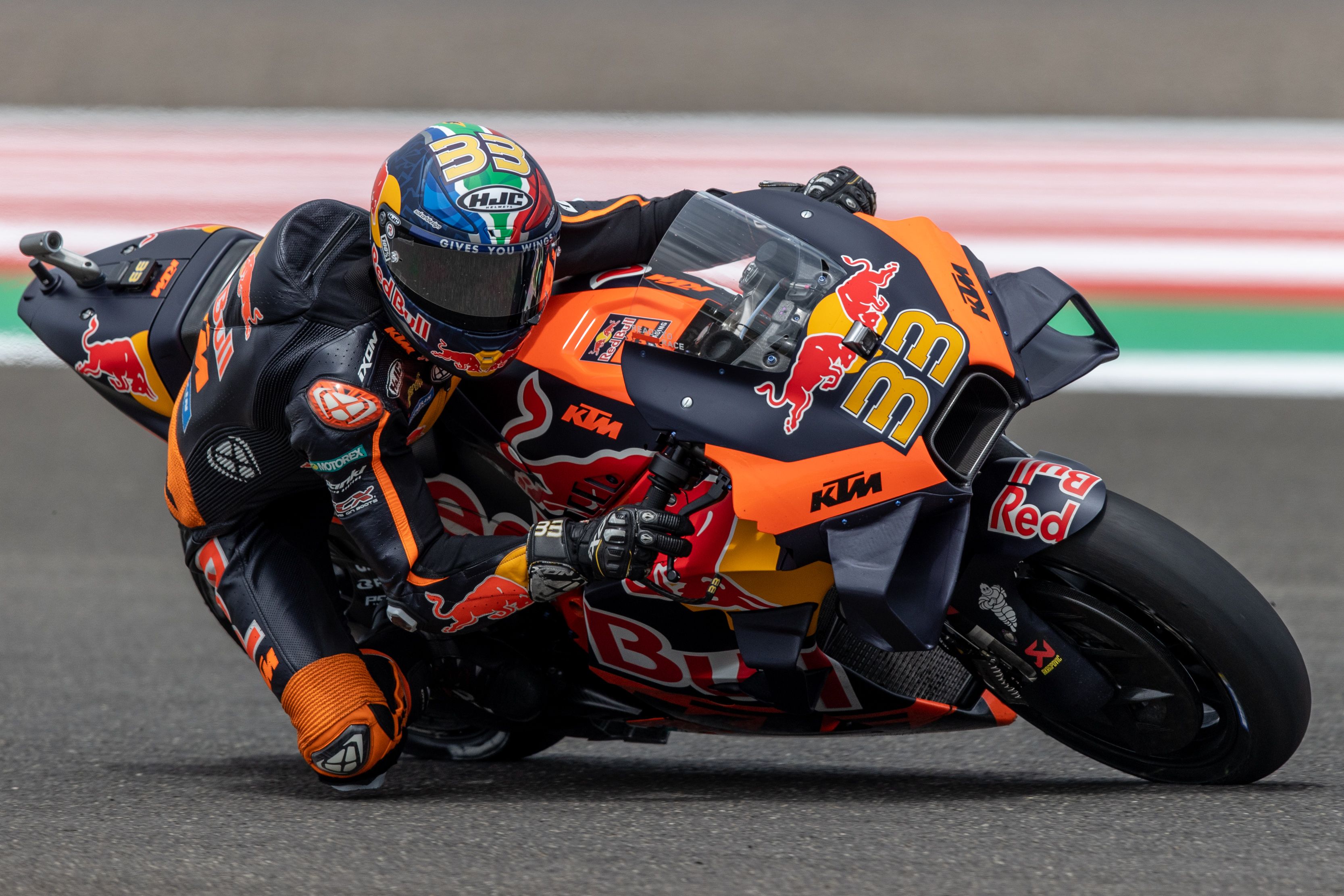Sunday 3rd April 2022 is unlikely to be a day that Aleix Espargaro will ever forget.
In what was his 284th start across the three classes of Grand Prix Motorcycle Racing, the Aprilia rider finally claimed his first ever race win, brilliantly holding off Jorge Martin to take victory in the Argentine GP.
In doing so, Espargaro lifted himself to the top of the World Championship standings after three races of the season, and in doing so, secured a first-ever MotoGP race win for Aprilia as well.
For Espargaro, and those associated with the Italian factory, this victory is just reward for the relentless hard work they have put in over the years, progressing from a team struggling to even score points, to one that is now standing on the top-step of the podium.
It could also be argued, however, that this success both for Aprilia and Espargaro out in South America, can also be seen as a significant victory for organisers Dorna, in the way they have run the series in recent years.
LOMBOK, INDONESIA - MARCH 20: MotoGP rider Aleix Espargaro #41 of Spain and Aprilia Racing in action during the MotoGP Grand Prix of Indonesia warm up session at Mandalika International Street Circuit on March 20, 2022 in Lombok, Indonesia. (Photo by Robertus Pudyanto/Getty Images)
Back in 2012, with grid numbers dwindling in the wake of first Kawasaki and then Suzuki withdrawing from the sport, Dorna introduced a new Claiming Rules Team category, that allowed teams with lower budgets to enter into the series.
Although much maligned, with bikes from that category rarely, if ever, threatening to trouble the podium finishers, not only did CRT keep grid numbers at a respectable level - there would have been just 12 bikes on the grid were it not for the extra nine in that CRT category in 2012 - it also offered ways into the Championship for news teams, factories and riders.
One of those was, unofficially, Aprilia, whose ART bike proved the most effective of all those CRT, not least with the Aspar team that at the time swept all before them in the CRT category, while being headed by a certain Aleix Espargaro.
For Espargaro, whose previous premier class GP experience had been an unspectacular stint with Pramac's satellite Ducati team, it was a way back into MotoGP that he has never looked back from, finally culminating in that long-awaited first win in Argentina at the weekend.
Of course, the Spaniard was not the only rider to benefit from that category. CRT also allowed the world to be introduced to the inescapably likeable, Homer Simpson idolising, Italian policeman Danilo Petrucci.
VALENCIA, SPAIN - NOVEMBER 14: Danilo Petrucci of Italy and Red Bull KTM Factory Racing leads the field during the MotoGP race during the MotoGP of Comunitat Valenciana: Race at Ricardo Tormo Circuit on November 14, 2021 in Valencia, Spain. (Photo by Mirco Lazzari gp/Getty Images)
That own progression of Petrucci from CRT also-ran to factory Ducati rider allowed him to take two MotoGP race wins that are among the most popular in the sport's recent history, not least his maiden victory on home soil in Mugello in 2019, prior to what many will have felt what was a premature departure from the paddock at the end of last year.
From there, Petrucci has gone on to make yet more history, becoming the first MotoGP rider to win stages at the Dakar Rally earlier in 2022.
But beyond opening doors for riders such as Espargaro and Petrucci, Dorna's backing for the CRT class also helped the competing factories themselves.
As the sport moved away from the CRT class, and the Open class that succeeded it - which again made competing more feasible, but limited the software that could be used on a bike to a standard-setting - the backing for those still making their way in the sport remained.
Recent years have seen factories without a certain number of race wins or podiums in recent previous seasons, receive concessions with regards to a variety of aspects, be it the number of engines that can be used over a season, the amount of time allowed for testing the bike away from race weekends.
That extra opportunity is one that has drastically levelled the playing field in recent years, allowing other factories to well and truly take the fight to the more established, successful, and financially powerful trio of Honda, Yamaha and Ducati.
Consequentially, recent years have seen the returning Suzuki win a world title with Joan Mir in 2019, KTM claim several race wins courtesy of Miguel Olveira and Brad Binder, and now taken Aprilia to GP victory for the very first time with Espargaro at the weekend.
As a result of that support for those factories, the state of play in now MotoGP is now very different to what it was when CRT was first introduced.
LOMBOK, INDONESIA - MARCH 20: MotoGP rider Brad Binder #33 of South Africa and Red Bull KTM Factory Racing in action during the MotoGP Grand Prix of Indonesia warm up session at Mandalika International Street Circuit on March 20, 2022 in Lombok, Indonesia. (Photo by Robertus Pudyanto/Getty Images)
In that 2012 campaign, the 18 MotoGP race wins were shared between three riders - Honda duo Casey Stoner and Dani Pedrosa, and Yamaha's eventual world champion, Jorge Lorenzo - while only five other riders stood on the podium throughout the whole of that season.
By contrast, in the three races we have had so far in 2022, there have already been three different race winners - none of which have come from the main factory teams of the big three of Honda, Yamaha, and Ducati - while nine different riders have stood on the podium.
Indeed, following Espargaro's success for Aprilia on Sunday, all six factories have now had a rider stand on the top step of a MotoGP podium in the last 24 races, meaning it is hard not to feel as though we are in a period, where almost any rider can win in this series.
While that may have seemed a distant pipe dream during the early days of the CRT category - given how exclusive the winner's club was at that point - Dorna's perseverance in helping teams and factories progress from that point to where they are now via those opportunities and concessions, means that the organiser's long game certainly looks to have paid off.
Given the extra uncertainty, excitement, and spectacle that provides, it is hard not to feel as though MotoGP is now all the better for it.




















